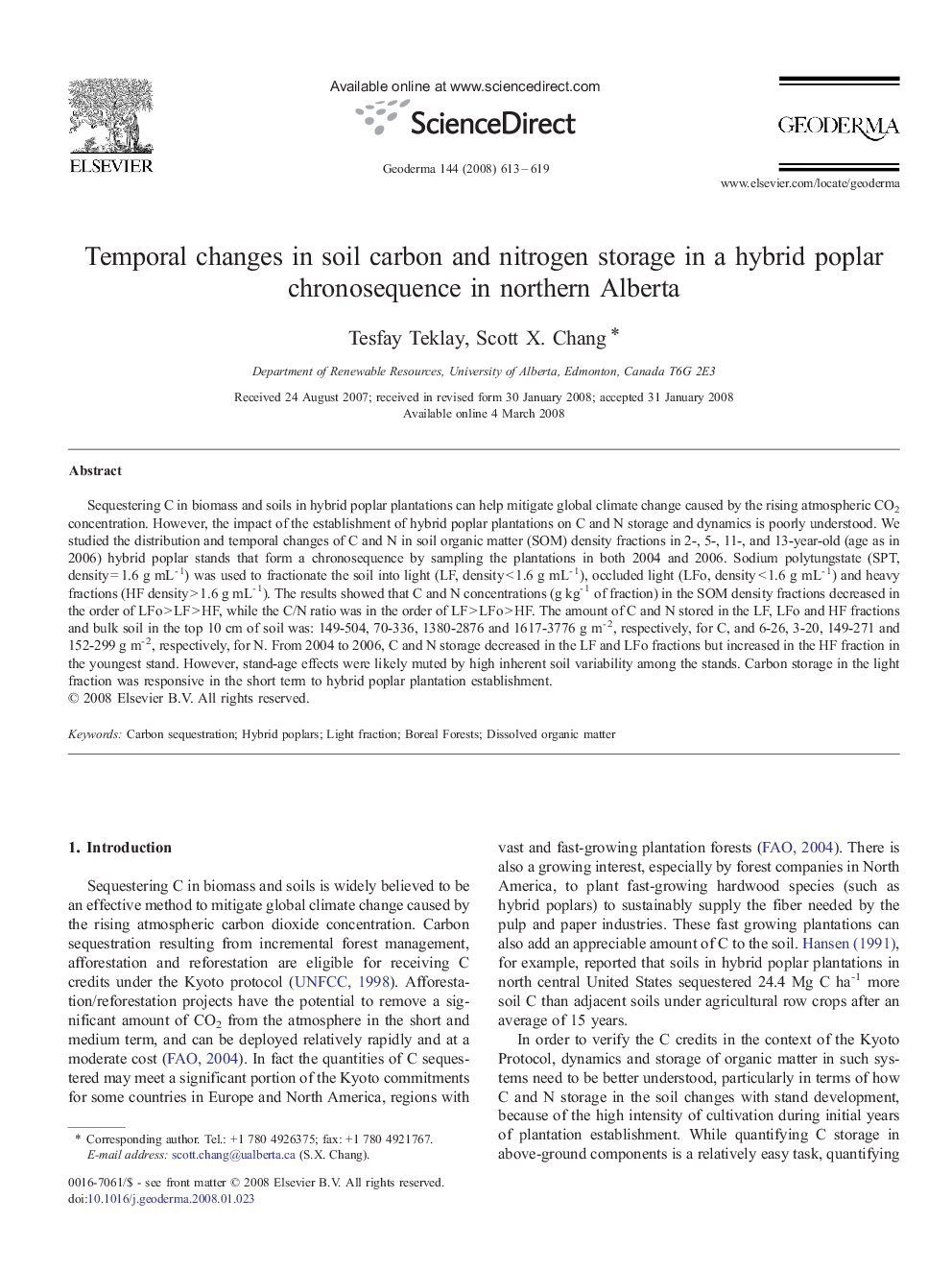| Article ID | Journal | Published Year | Pages | File Type |
|---|---|---|---|---|
| 4575285 | Geoderma | 2008 | 7 Pages |
Sequestering C in biomass and soils in hybrid poplar plantations can help mitigate global climate change caused by the rising atmospheric CO2 concentration. However, the impact of the establishment of hybrid poplar plantations on C and N storage and dynamics is poorly understood. We studied the distribution and temporal changes of C and N in soil organic matter (SOM) density fractions in 2-, 5-, 11-, and 13-year-old (age as in 2006) hybrid poplar stands that form a chronosequence by sampling the plantations in both 2004 and 2006. Sodium polytungstate (SPT, density = 1.6 g mL- 1) was used to fractionate the soil into light (LF, density < 1.6 g mL- 1), occluded light (LFo, density < 1.6 g mL- 1) and heavy fractions (HF density > 1.6 g mL- 1). The results showed that C and N concentrations (g kg- 1 of fraction) in the SOM density fractions decreased in the order of LFo > LF > HF, while the C/N ratio was in the order of LF > LFo > HF. The amount of C and N stored in the LF, LFo and HF fractions and bulk soil in the top 10 cm of soil was: 149-504, 70-336, 1380-2876 and 1617-3776 g m- 2, respectively, for C, and 6-26, 3-20, 149-271 and 152-299 g m- 2, respectively, for N. From 2004 to 2006, C and N storage decreased in the LF and LFo fractions but increased in the HF fraction in the youngest stand. However, stand-age effects were likely muted by high inherent soil variability among the stands. Carbon storage in the light fraction was responsive in the short term to hybrid poplar plantation establishment.
